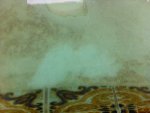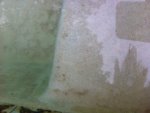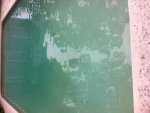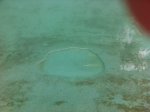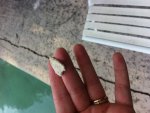Hello everyone, quick question about my plaster I'm hoping you can assist me with. We are very new to pool ownership and this will be our first season with a -- hopefully -- open pool.
A little background and our numbers-- We bought the home in December and the pool was disgusting, dark green, with a whole ecosystem of creepy crawlies living in it. We got most of the debris out and shocked the pool until it was not green anymore and mostly clear. I'll admit since then we've been a little lax, with the cold weather and all, and have basically just been dumping enough bleach in to keep the water from turning green and not testing until now. We have been really dedicated the last few weeks and are almost where we need to be, except for a couple of things.
The water will look really clear, especially in the shallow end, until we brush or rake. Then huge clouds billow up and the water is cloudy for two days, although maintaining shock level. The water looks good again until we brush or disturb the bottom in any way. I thought at first that this was dead algae. I still think it is, for the most part, but there is something else that is troubling-- I stuck my hand in the pool and touched the sides/bottom for the first time today. They are VERY rough and sandy bits rub off on your fingers.
Researching this, I have found that it could be one of two things--failing plaster or calcium build up. Either seem to happen depending on the CH dipping to either extreme. The problem is, this pool has been to both extremes. How do I know what the issue with the pools texture is? Earlier I went outside and --very scientifically-- scratched the side of the pool with a nickel in one spot over and over--it created about a 1/4 inch indention. So is my plaster in such poor shape that its that easy to scrape off and indent, or do I have an insane calcium build up?
Here are my numbers from day one-
12/16
FC - 0
CC or TC - 0
pH - 7.5
TA - 90
CH - 450
CYA - Off the charts, over 100
And from today
4/19
FC- 10
CC- 10
pH- 7.5
TA- 70
CH- 120
CYA- 30
Added 4 lbs of hardener today because that's what I had on hand, realize I probably need to add more. Also added more bleach after testing so my FC is probably 12 now.
I apologize for the wall of text and thank you SO MUCH in advance for your assistance.
A little background and our numbers-- We bought the home in December and the pool was disgusting, dark green, with a whole ecosystem of creepy crawlies living in it. We got most of the debris out and shocked the pool until it was not green anymore and mostly clear. I'll admit since then we've been a little lax, with the cold weather and all, and have basically just been dumping enough bleach in to keep the water from turning green and not testing until now. We have been really dedicated the last few weeks and are almost where we need to be, except for a couple of things.
The water will look really clear, especially in the shallow end, until we brush or rake. Then huge clouds billow up and the water is cloudy for two days, although maintaining shock level. The water looks good again until we brush or disturb the bottom in any way. I thought at first that this was dead algae. I still think it is, for the most part, but there is something else that is troubling-- I stuck my hand in the pool and touched the sides/bottom for the first time today. They are VERY rough and sandy bits rub off on your fingers.
Researching this, I have found that it could be one of two things--failing plaster or calcium build up. Either seem to happen depending on the CH dipping to either extreme. The problem is, this pool has been to both extremes. How do I know what the issue with the pools texture is? Earlier I went outside and --very scientifically-- scratched the side of the pool with a nickel in one spot over and over--it created about a 1/4 inch indention. So is my plaster in such poor shape that its that easy to scrape off and indent, or do I have an insane calcium build up?
Here are my numbers from day one-
12/16
FC - 0
CC or TC - 0
pH - 7.5
TA - 90
CH - 450
CYA - Off the charts, over 100
And from today
4/19
FC- 10
CC- 10
pH- 7.5
TA- 70
CH- 120
CYA- 30
Added 4 lbs of hardener today because that's what I had on hand, realize I probably need to add more. Also added more bleach after testing so my FC is probably 12 now.
I apologize for the wall of text and thank you SO MUCH in advance for your assistance.
Last edited:


